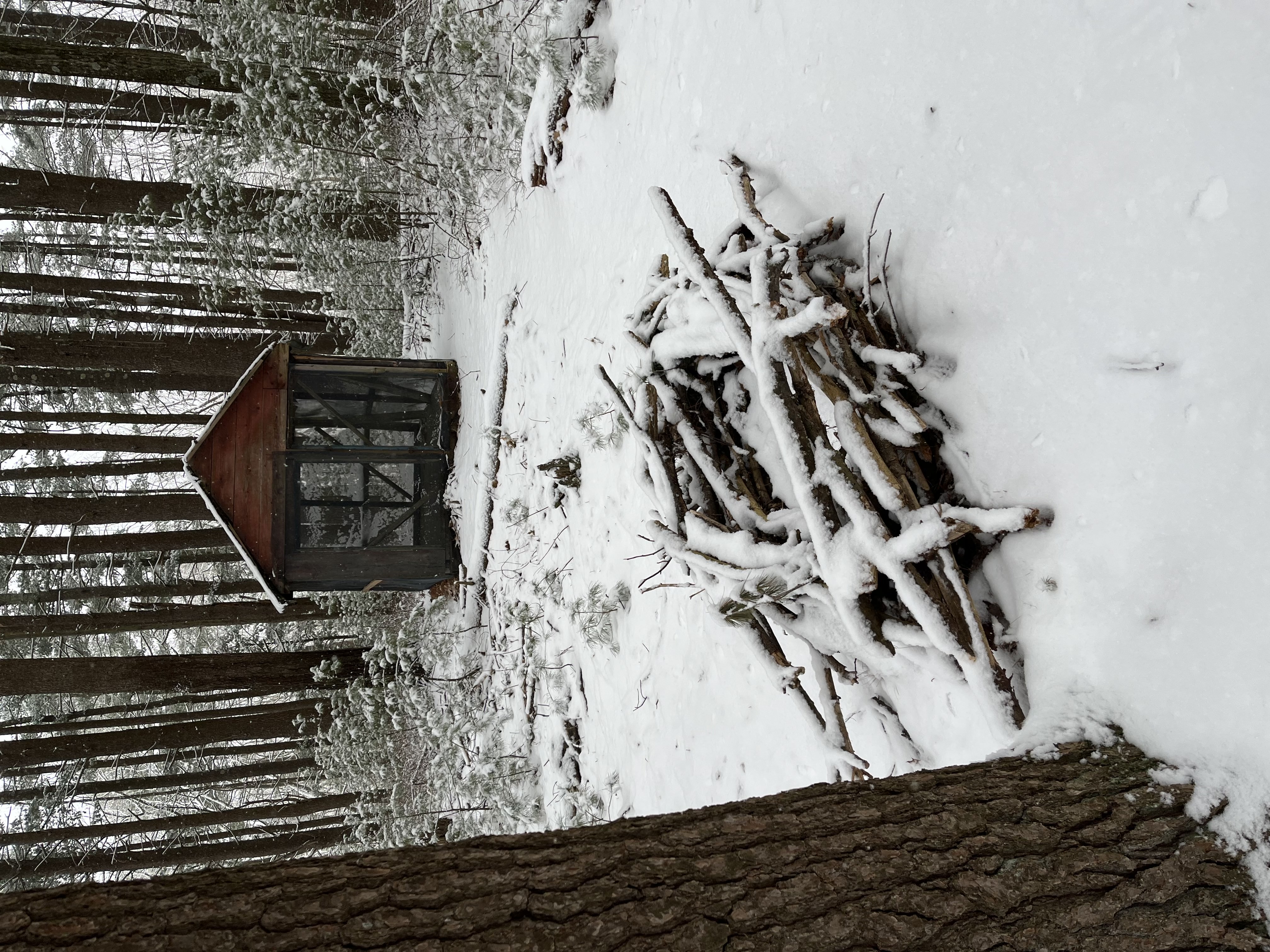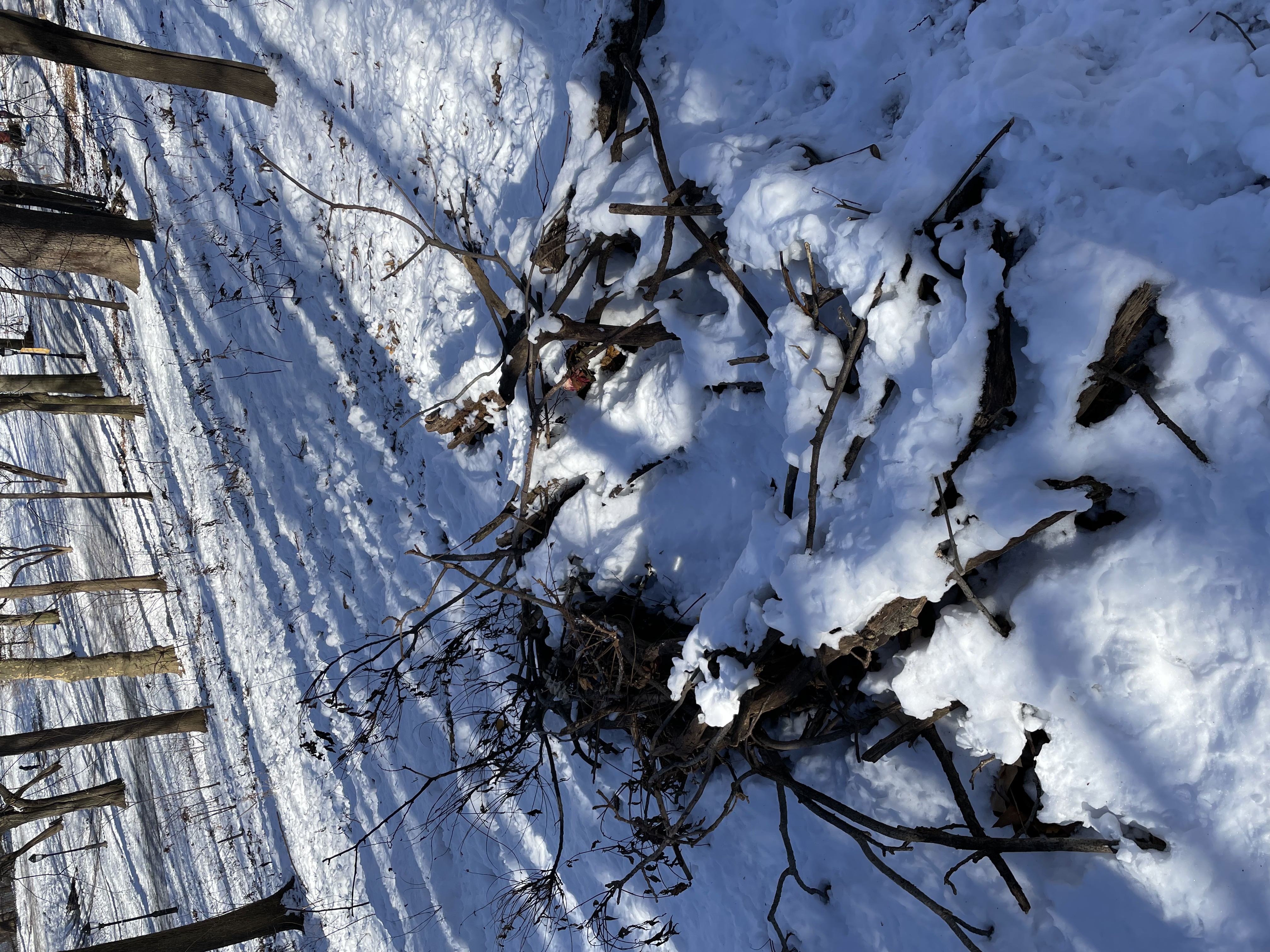2021-2022
Various outdoor locations
Various outdoor locations
Nesting
This project was collective and multiple in scope. With a simple gesture of re-creating a human-scale nest, it asks: where is home? Where and to whom are we responsible? How can we learn from other animal architectures and instincts?
Today, when climate change has started to have very real impacts for many with water level rise, and extreme and volatile temperature variation, not to mention viral threats, the idea of building with porosity in mind can feel frightening. Disorder has been taken out of the design. Our structures seem unable to breathe, the boundary between inside and out thoroughly guarded with energy-guzzling air conditioning units or heaters.
There is, however, potential to reimagine our homes; we can perhaps learn from other creatures and how they create security for themselves and cope with uncertainty.
This project was collective and multiple in scope. With a simple gesture of re-creating a human-scale nest, it asks: where is home? Where and to whom are we responsible? How can we learn from other animal architectures and instincts?
Today, when climate change has started to have very real impacts for many with water level rise, and extreme and volatile temperature variation, not to mention viral threats, the idea of building with porosity in mind can feel frightening. Disorder has been taken out of the design. Our structures seem unable to breathe, the boundary between inside and out thoroughly guarded with energy-guzzling air conditioning units or heaters.
There is, however, potential to reimagine our homes; we can perhaps learn from other creatures and how they create security for themselves and cope with uncertainty.
Nests offer an interesting example, as they have a “certain chemistry — an alchemy, almost. From humble parts, a greater sum emerges and coheres.”(Siobhan Roberts, NYT) This construction is potentially widely applicable to structures in architecture, which some researchers at the University of Chicago have called aleatory architecture, offering a counter to traditional “architecture’s prejudices for totalizing order and control.”
In Latin, alea refers to dice or gambling; they are asking whether design could arise from disorder. Features of aleatory architecture include simple structures and achieving self confinement through interlocking elements or entanglement. These structures are made relatively quickly, are easy to disassemble and can be easily recycled and reused. The structures hold an aesthetic beauty in their form and construction. I am interested in home ecologies and designs that incorporate chance, that are porous, and that do not deny the inherent unknowns of the outdoors.
In Latin, alea refers to dice or gambling; they are asking whether design could arise from disorder. Features of aleatory architecture include simple structures and achieving self confinement through interlocking elements or entanglement. These structures are made relatively quickly, are easy to disassemble and can be easily recycled and reused. The structures hold an aesthetic beauty in their form and construction. I am interested in home ecologies and designs that incorporate chance, that are porous, and that do not deny the inherent unknowns of the outdoors.






